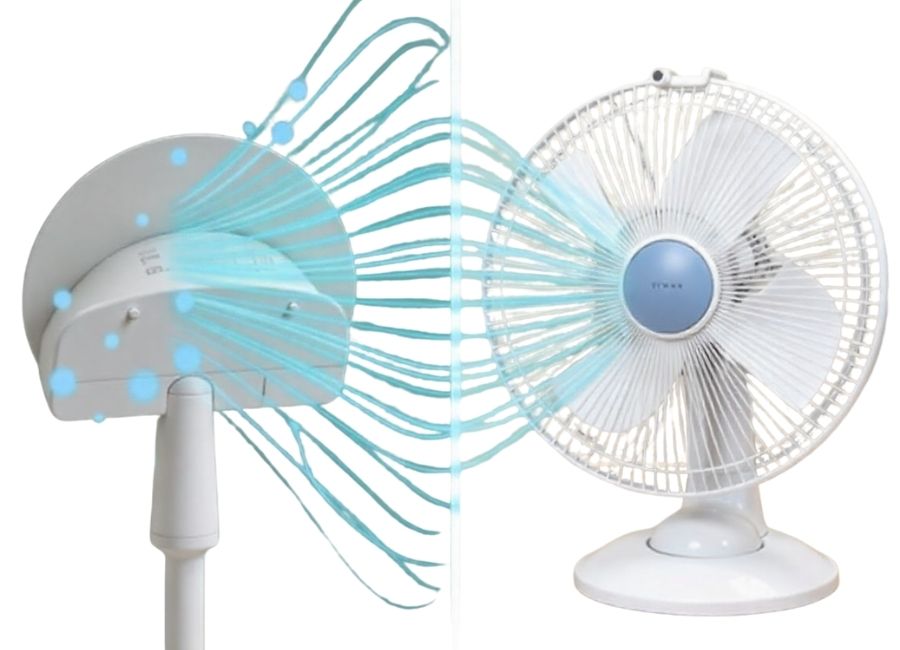As summer temperatures rise, finding ways to stay cool becomes a top priority. While air conditioning is the go-to solution for many, it can be expensive to run and isn’t always available. A standard electric fan is a more energy-efficient alternative, but it often just circulates warm air, providing minimal relief on the hottest days.
Fortunately, you don’t have to settle for a stuffy room. With a few simple tricks, you can transform your regular fan into a powerful cooling machine. This guide will walk you through seven effective methods to make your fan blow colder air, helping you beat the heat without breaking the bank. From using ice to optimizing airflow, these tips are easy to implement and can make a significant difference in your home’s comfort.
How Do Fans Actually Work?
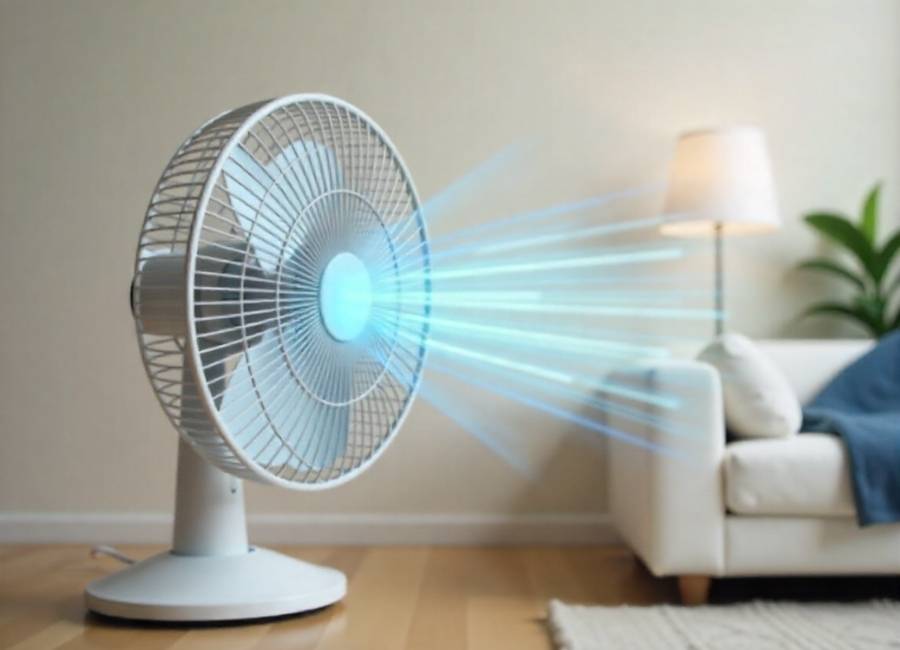
Before we explore how to make your fan blow colder air, it’s helpful to understand how it works. Unlike an air conditioner, a fan doesn’t actually lower the temperature of the air in a room. Instead, it creates a wind-chill effect. (Auckland et al., 2025)
The blades of the fan move air across your skin, which speeds up the evaporation of sweat. This process pulls heat away from your body, making you feel cooler. (Why Does a Fan Cool You Without Cooling the Air?, n.d.) The air itself remains the same temperature, but the sensation of moving air provides a sense of relief. (Does a Fan Really Cool the Air?, n.d.)
To make a fan blow genuinely cold air, you need to introduce a cooling element into its path. The following methods are based on this principle, using simple physics to turn your fan into a DIY air cooler.
How to Make Your Fan Blow Colder Air
Here are seven proven methods to get colder air from your fan.
1. The Ice Bowl Trick
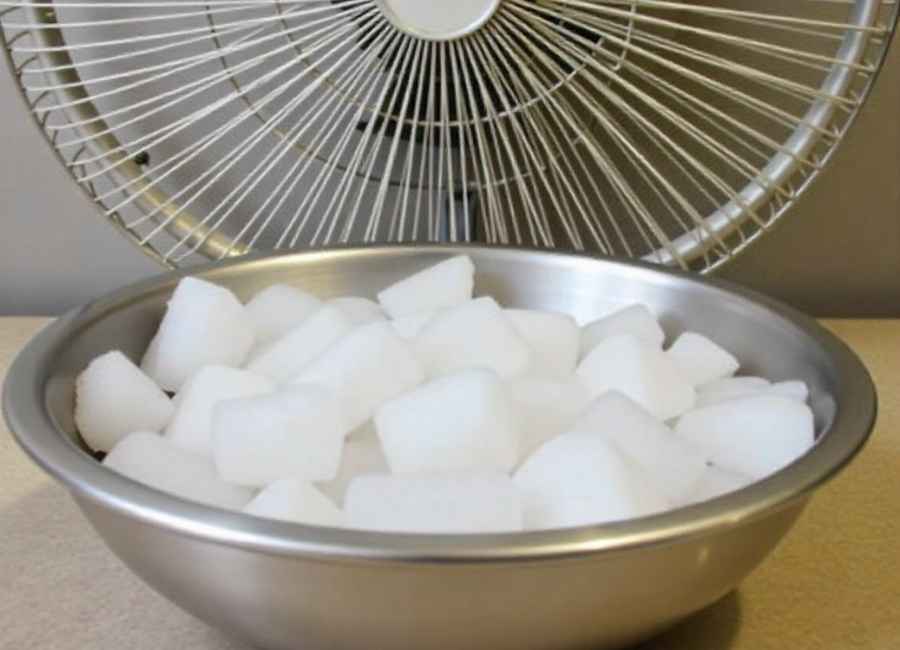
This is one of the oldest and most popular methods for a reason—it’s simple and effective. By placing a bowl of ice directly in front of your fan, you can create a refreshing, chilled breeze.
How to do it:
- Find a large, shallow bowl or pan. A metal bowl works best, as it will get cold and help chill the surrounding air.
- Fill the bowl with ice cubes or a large block of ice. You can also use frozen water bottles or ice packs.
- Position the bowl a few inches in front of the fan’s blades.
- Turn the fan on and direct it toward the ice. The fan will blow air over the ice, picking up the cold moisture as it melts. This creates a fine, cool mist that lowers the temperature of the air blowing toward you.
For an even stronger effect, add a little salt to the ice. Salt lowers the freezing point of water, making the ice even colder. (Helmenstine & Marie, 2025)
2. The Frozen Bottle Method
Similar to the ice bowl trick, this method uses frozen water bottles to cool the air. It’s a great option if you want a longer-lasting solution with less mess from melting ice.
How to do it:
- Take two or three standard plastic water bottles and fill them about 75% full with water. Add a couple of tablespoons of salt to each bottle before capping them tightly.
- Place the bottles in the freezer until they are frozen solid.
- Position the frozen bottles on a tray or in a shallow pan to catch any condensation.
- Place the tray directly in front of your fan and turn it on. The air blowing over the cold bottles will be significantly cooler. Once the bottles thaw, you can simply refreeze them.
3. Create a Cross Breeze
This technique uses the power of natural airflow to cool your home. By strategically placing two or more fans, you can create a cross-breeze that pulls hot air out and draws cooler air in. This method is most effective during cooler parts of the day, like the early morning or late evening.
How to do it:
- Identify a window on the cooler, shaded side of your home. Place one fan facing into your room to draw the cooler outside air inside.
- On the opposite side of the house, place another fan in a window or doorway facing outwards. This fan will push the warm, stale air out of your home.
- Turn both fans on. This setup creates a current that circulates air throughout your space, effectively lowering the overall temperature.
4. Adjust Your Ceiling Fan’s Direction
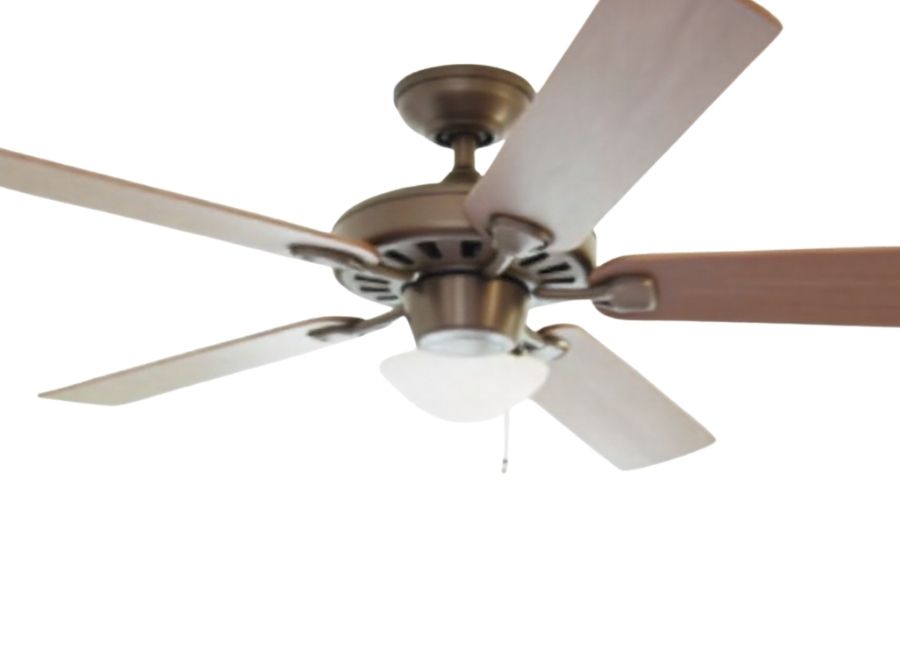
Did you know your ceiling fan has two different settings for summer and winter? Most ceiling fans have a small switch on the motor housing that changes the direction of the blade rotation. Using the correct setting can make a huge difference.
How to do it:
- For summer, your ceiling fan blades should rotate counter-clockwise.
- This direction pushes cool air downwards, creating a direct, concentrated downdraft that produces the wind-chill effect on your skin.
- To check the direction, stand directly under the fan. You should feel a cool breeze. If you don’t, turn the fan off and flip the switch on the motor to reverse the direction.
5. Use Wet Sheets or Towels
This method works on the principle of evaporative cooling, much like the ice bowl trick. It’s particularly effective in dry climates. (DIY Evap Cooling Fan! – Homemade “misting style” Evap Air Cooler! – Simple Box-Fan Conversion!, 2017)
How to do it:
- Soak a bedsheet or a few towels in cold water. Wring them out so they are damp but not dripping.
- Hang the damp sheet or towels in front of an open window or in the path of your fan.
- As the fan blows air through the damp fabric, the water will evaporate, cooling the air and adding a bit of humidity. This can provide significant relief on a dry, hot day.
6. Keep Your Fan Clean
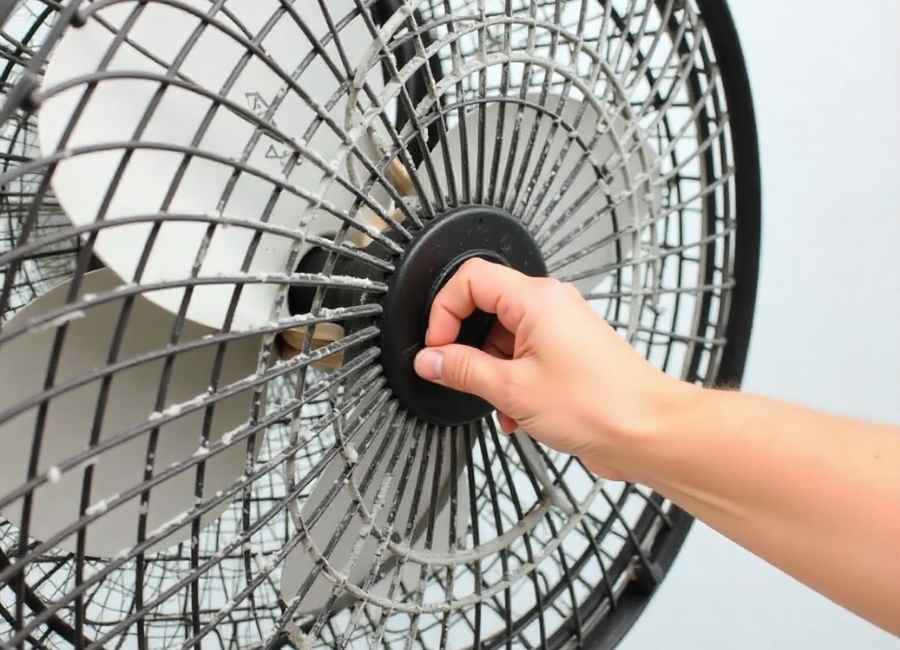
A fan covered in dust and grime can’t operate at peak efficiency. The buildup on the blades can slow them down and obstruct airflow, making your fan less effective. (Why Isn’t Your Fan Delivering Enough Airflow?, 2023)
How to do it:
- Unplug your fan before cleaning.
- Use a screwdriver to remove the grate or cage covering the blades, if possible.
- Wipe down the blades and the inside of the grate with a damp cloth or all-purpose cleaner.
- For hard-to-reach areas, use a can of compressed air or a vacuum cleaner with a brush attachment.
- Let everything dry completely before reassembling and plugging the fan back in. A clean fan will move air more efficiently, maximizing the cooling effect.
7. Close Doors and Block Sunlight
To maximize your fan’s cooling power, you need to control the environment. The goal is to cool a specific area, not your entire home.
How to do it:
- Close the doors to any rooms you aren’t using. This contains the cool air in a smaller space, making your fan’s efforts more effective.
- During the hottest parts of the day, close your curtains and blinds to block out direct sunlight. Sunlight streaming through windows can quickly heat a room, forcing your fan to work harder with less effect. Blackout curtains are especially effective for this. (Do blackout curtains keep heat out? Our HVAC experts reveal everything you need to know (2023)
Make Your Home an Oasis
You don’t need an expensive air conditioning system to stay comfortable during a heatwave. By using a bit of creativity and some basic science, you can easily upgrade your standard fan into a refreshing cooling device.
Whether you choose the simple ice bowl trick, create a strategic cross-breeze, or simply clean your fan blades, these methods can provide welcome relief from the summer heat. Try a few of these hacks to see which works best for your space and start enjoying a cooler, more comfortable home today.







